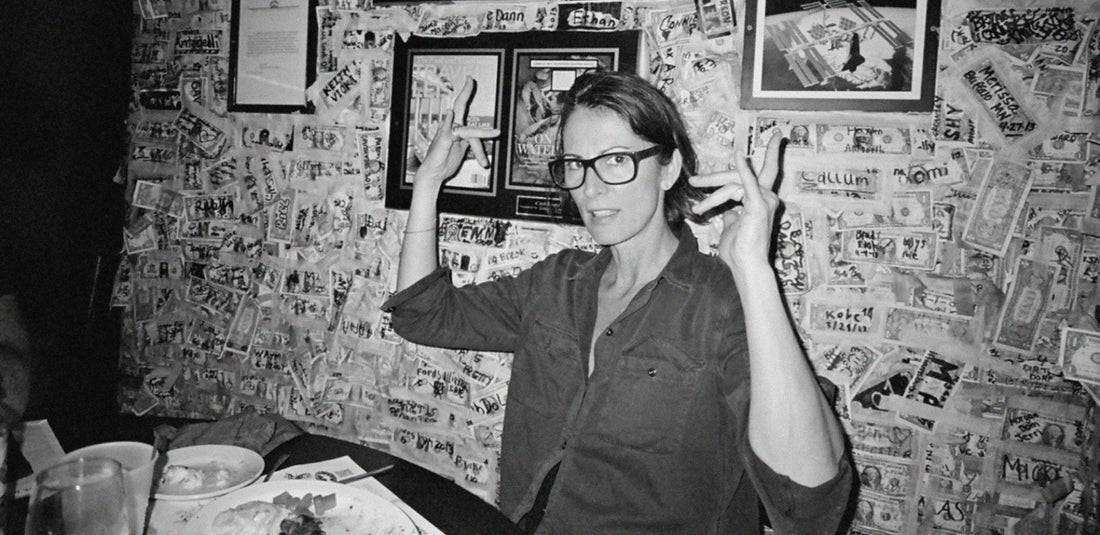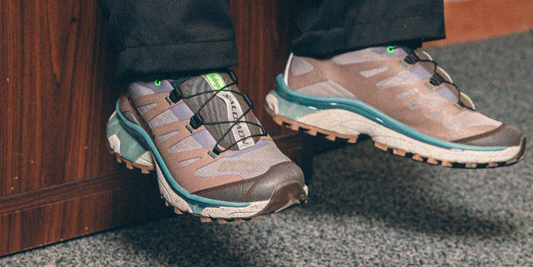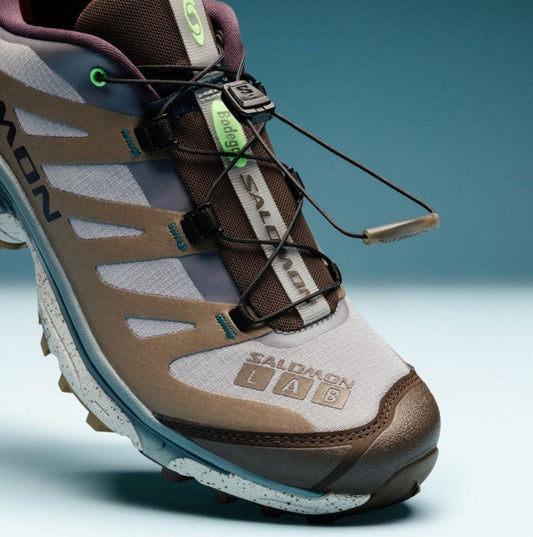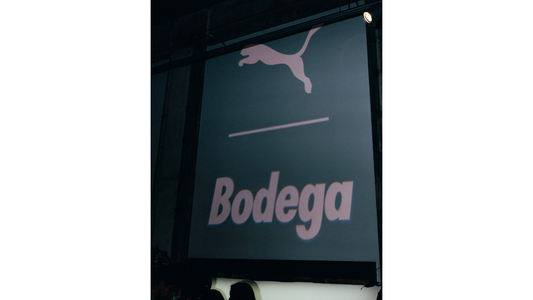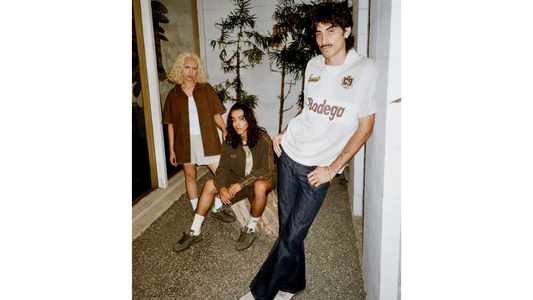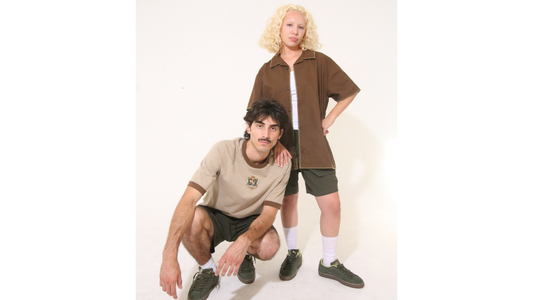With a view of NY shaped by her proximity away from the city and a homelife rooted in documenting and celebrating even life's most seemingly mundane moments, Cheryl Dunn has carved out a one-of-a-kind lane of storytelling through street photography and filmmaking.
From her up-close-and-personal humanization of subjects to the boots-on-the-ground approach to documentation, Dunn has continually shed light on the shadows, from the world of graffiti writers and artists to skaters and street protesters, shaping our view of the world through a subcultural lens. In the latest Creative Community feature, we had the honor of sitting down with Cheryl to talk early days, the very influential Everybody Street, what she likes shooting the most, and more.
Growing up in New Jersey did New York City take on a mythic energy? How did being in close proximity to the city shape you?
Oh yes definitely. It was so close yet so far. When I was in HS NYC was basically bankrupt and super crime ridden so people were afraid to go there. What you think of a place from the outside is obviously so much different than being there on the inside. I learned that lesson numerous times over the years (shooting in mosh pits, being in the center of the events of 911). Entering NYC was so exhilarating, upon going over the bridge or through a tunnel my heart would race. Anything could happen good or bad, I was living for it... I didn't know what I wanted to be but I knew I would be doing it there.
What was your introduction to photography like?
I grew up in a household where every celebration or mundane activity was documented photographically and on 8mm film. Having these physical objects of image and memory was so normal to me. We would play with boxes of snapshots and beg our parents to watch home movies on the weekend nights. I just carried that over getting my first decent 35mm camera at about 16 years of age.
Selected photography from portfolio | cheryldunn.net
Gravitating towards street photography and documenting real life as it unfolds, did you have any photography influences growing up? Or did this style of spontaneous point and shoot come naturally?
As far as my early influences, I always looked at LIFE and LOOK magazines but i was not exploring the photographers taking these pictures yet. I came from a working-class family where no one went beyond High School. My art history education started in college. I was obsessed with Bruce Davidson and Mary Ellen Mark early on. I had a very passionate Art History professor at Rutgers and through him I believe I adopted the practice of documenting artists particularly early in their careers where in some cases creative drive is most pure and not yet clouded by the business of art.
My street photography came from being on the streets a lot. I lived in Europe for about 3 years in Milan and Barcelona and traveled all around. I never spoke these languages and was mostly by myself. So I just walked and walked, observed the streets, and took pictures. My camera was my only friend. Taking a spontaneous shot acted as a document of “ I was there at this moment”. These photos are memories. I think I have a good memory but in reality, I have at least a small document of almost everything I have done.
Do you remember the first photo or series of photos you took that got recognition/ publicity? What was it and how did that feel?
Early in my career, magazines were the way to get your work seen. If you got an editorial spread hopefully it got noticed and then maybe some advertiser would actually pay you to do something. It was the only way to survive cause usually you just had to pay to shoot an editorial. I do remember a fashion story I sent into Raygun magazine unsolicited. The Photo Editor, Robyn Forrest did not know me or I her, and she published the work solely on the merit of the photographs. In a way, I feel this was one of the only times it was only about the work and not anything else that went into the free-lance hustle to survive in this town. I have always been proud of that story.
"You would be surprised how close you can shoot a camera at someone on the streets of NY without them noticing. You have to work your way into it. It’s hard for me to just walk onto the streets and get in someone's face. It's like a dance routine that you have to continually practice."
Selected photography from portfolio | cheryldunn.net
Knowing when to get up close or keep your distance without influencing your subject seems to be an art of its own while on the street - any stories where a photo just lined up? How about an instance where things got dicey?
You would be surprised how close you can shoot a camera at someone on the streets of NY without them noticing. You have to work your way into it. It’s hard for me to just walk onto the streets and get in someone's face. It's like a dance routine that you have to continually practice. Sometimes I would come back from a 5-day music festival in the south where I would be shooting 10 hours a day in a sea of 100 thousand people dancing around and I’m super loose and fast with my camera. Then I would get back to NY and roll up to someone with the same energy and be confronted with “get out of my face” .. all locations have different energy and you have to psych with the place to do it well.
One time I was teaching a street photography workshop in Slovenia and I asked the kids to just keep walking toward the person on the street and keep snapping and see when and if they notice you. They were all very surprised how close they got.
It can be very culturally specific. Once I was in Russia and I had my Leica just hanging round my neck and this woman on a tram almost bit my head off and I wasn’t even shooting just having it made her very suspicious of me. That was a place in WW2 you could accuse someone of something and they would be sent to Siberia so I get it.
Another time I was shooting in a mosh pit at the Warp Tour full of New Jersey teens and someone punched me really hard square on the top of my head and my glasses went flying. I thought I had a concussion. I didn’t drop the camera though. It had to be a pretty tall dude cause I saw nothing coming and the punch landed straight down on me. I don’t hold cameras to my face in hectic situations like that, you’ll get your nose broken if the camera gets smashed into your face. I tend to shoot wider lenses and not look thru the viewfinder.
One night a few years ago I went to the East Village later in the night for that stupid Santa con day. I took a guy’s picture and he flipped out and started chasing me and screaming. I was like “Dude you’re in public in a Santa costume you don’t want to be noticed ?” Anyway the laws in NY state are that you have no right to privacy if you are in public so sorry Santa.
On the good side ...
Hopefully, too many times when things lined up. But you remember mostly the ones that didn’t work or you didn’t take the shot for any number of reasons. Those pictures are ingrained in my mind... the ones you get you just say "ok next".
Selected photography from portfolio | cheryldunn.net
Did film and documentaries feel like a natural progression from your photo background? Was there a catalyst?
Yes. My stills always had a lot of motion in them or implied action out of the frame so breaking that frame was a natural progression. Also, I am really a storyteller. Whenever I would show my work ( stills ) I would tell a big story that led to that shot. I love them both and always incorporate my stills in my films but being able to work with other things I love like music, rhythm as well as images and story telling was liberating.
What was your first film project and how did you navigate this new medium?
I think the first film I did professionally was for a snowboard company called Original Sin. They wanted to make a film about the artist who did the graphics, not the riders. It was a novel idea at the time. I shot of lot of 16mm and traveled around to capture what I thought was the essence of these artists ... it was called SPED. Many of these artists now are very known.
Back Worlds For Words featuring Mark Gonzalez and directed by Cheryl Dunn
Can you talk about your video with Mark Gonzalez where he’s in that custom fencing uniform and doing some sort of skate ballet in a German art museum? How the heck did that come about? How did it end up in the “West Coast” video by Coconut Records?
Ha good story ... well I was in a group show in SF at the Luggage Store Gallery that Thomas Campbell curated. I think around 1998 or so. Mark was in it as well and he saw my stuff and asked me to make this film with him. I think he liked that I was not a skate photographer or skate filmmaker and that I had a dance background. Aaron Rose from Alleged Gallery produced it. I loaded up a suitcase of cameras and went to Monchengladbach, Germany. Mark was only doing the performance 2 times skating around 2 floors jumping down stairs and up walls so I passed 8mm cameras, video cameras to anyone that could hold one and I shot 16mm. it was amazing how the museum trusted him to skate amongst very famous works of art.I don’t think that would happen today.
The Coconut Records music video was a surprise to me. I think Mark gave Jason a copy of the film. No one asked me and then one morning I get a few calls from friends congratulating me on the music video. I was like what are you talking about? No hard feelings (anymore).
Trailer for Everybody Street directed by Cheryl Dunn
Everybody Street puts the focus on some of the most influential street photographers in NYC, what was the process like making that film? With such a positive reception, what do you think draws people to it?
The first iteration of it was a short commissioned by the Seaport Museum in lower Manhattan. They were doing an Alfred Steiglitz exhibition and wanted a film that would bring a larger crowd in. It was (RIP) an amazing place that not many people checked out. I got a call from a friend doing PR for them and she said pitch something. I thought to make a film about street photographers who followed in his footsteps and went to the streets and were living to tell their story. I chose photographers who had long careers because I felt I had less time to get their stories recorded. It was well received so I raised more money to make it feature-length and get more artists that I was not able to get the first time like Jill Freedman , Elliot Erwitt...
Many young photographers have told me that movie made them do what they do, gave them the confidence to try. That makes me psyched. I tried to make a film that reflected the energy of the city - sight, sound, rhythm, music - my goal was to communicate why we LOVE NY.
Trailer for Moments Like This Never Last directed by Cheryl Dunn
What were your first impressions of Dash Snow? Did you know right away that he was someone you wanted to tell the story of? How did Moments Like This Never Last develop from an idea into your latest film?
When I first met Dash I was shooting for a book, the install of Street Market, an amazing show by Barry McGee, Stephen Powers, and Todd James that was at Deitch projects around 2000. At the time I was around a lot of graff writers and I thought 'Someday I wanted to make a film about them', so I started interviewing some writers. Dash showed up during these 2 weeks to lend a hand and he was just an amazing kid, like a magical NYC wild child. I was super intrigued by him as many people were. He just had a very special energy. I continued to follow his art accomplishments and shot him numerous times on missions on trains, rooftops, etc. and, in this 7-story abandoned building I could get into from a back fire escape from my studio loft on Maiden Lane. I was just getting footage for a future film. No one thinks that their 20-something friend will die, so when he passed I felt it was very important that his story be told from the inside. A number of filmmakers were coming around NY looking for footage looking to tell his story but they were not of the scene, not New Yorkers, were not here. So I embarked on his story, finding funding, shooting, editing whatever it took to get that story into the world.
Selected photography from portfolio | cheryldunn.net
It just takes a quick look at your site to get an idea of all the projects you’ve done over the years, spanning everything from fashion and sports to music and journalistic pursuits. Does any area stick out as one you like working in the most? Any upcoming projects that you’re particularly stoked about?
I love to shoot. I love to tell stories, I like leading my crew to solve problems. Technology changes so fast cameras advance, you need to shoot all the time to discover ways of making, to spark ideas, I’m always learning. I was a pretty serious athlete, I have a dance background. I love to direct people moving whether that is fashion or sports. I love to study and try to understand the origins of creativity and inspiration. But most of all I love people’s stories genuinely. So I guess to answer that I love them all but I really love to shoot dancers, artists, and musicians.
I am currently making another feature film about Creative Growth, an art center in Oakland Ca for artists with disabilities .. I have been shooting there for about 20 years and they will be turning 50 this spring. I'm very excited.
In closing, any advice for the next generation of creatives who want to pursue their passions for a living?
Work hard, stay the course, be confident. People will respond to your passion even if they don’t understand yet what you are making. Don’t throw anything away that you made if you can help it. Support your artist friends, go to their shows, collect their work, document your time.

